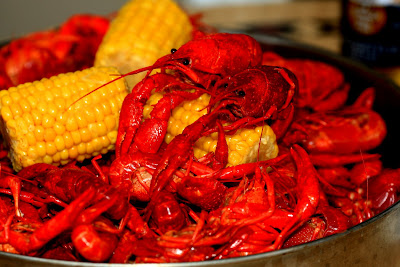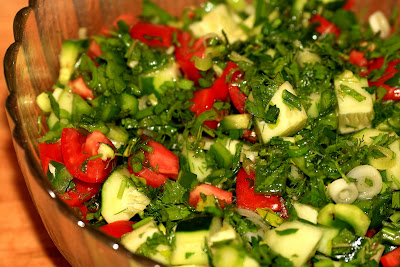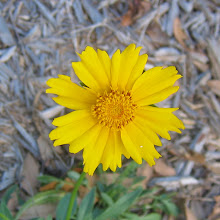 When you smell boiled crawfish around your neighborhood in Louisiana, you know spring arrives. The season of Louisiana crawfish is from early spring to early summer. The best crawfish boil is done at home using a big pot with Cajun spices, potatoes, onions, corns, garlic and other vegetables and eat with many friends and family. This is one of the typical Cajun dishes. Do not hesitate to use your fingers to get dirty because this also brings the dynamic sprit of Cajun culture. Actually, it is impossible to eat crawfish without using your fingers!
When you smell boiled crawfish around your neighborhood in Louisiana, you know spring arrives. The season of Louisiana crawfish is from early spring to early summer. The best crawfish boil is done at home using a big pot with Cajun spices, potatoes, onions, corns, garlic and other vegetables and eat with many friends and family. This is one of the typical Cajun dishes. Do not hesitate to use your fingers to get dirty because this also brings the dynamic sprit of Cajun culture. Actually, it is impossible to eat crawfish without using your fingers!Acadians, as the Cajun ancestors are known, originally came from France. In the early 1600’s, Acadians moved to settle Nova Scotia, New Brunswick and Prince Edward Island in Canada when France established its colonies there. However, after British took over the colonies from France, in 1755 many of the Acadians were brutally deported. According to Wikipedia, more than 12,000 Acadians were expelled from Canada between 1755 and 1763.
Eventually, many of the Acadians escaped to Louisiana where France had colonized. First, they arrived to New Orleans, which was already occupied by other immigrants. As a result, they were forced out further southwest of New Orleans, which were undesirable swamp areas. They had to live in horrible conditions in which the summer was terribly hot and humid and malaria and yellow fever were constantly present.
Living in an unwanted swamp region was challenging. However, this circumstance gave plenty of “spices” into the distinctive Cajun cuisine.
Crawfish has been used for just bait for a long time. They had been considered as smelly and ugly creatures. However, throughout the tough life living in swamps, Cajuns discovered their unique taste and turned them into an exquisite Cajun dish. Adding Cajun spices, vegetables and, sometimes, Cajun sausages brings out the fine flavor of crawfish in an excellent way.
Once a year, my husband and I decided to eat boiled crawfish to celebrate whatever we wish. This spring, we celebrated my fist spring in Louisiana and have a high regard for Cajuns who amazingly survived, thrived in this region and developed their own unique culture.












 Directions:
Directions:
 According to the Global Sex Survey done by Durex, a British condom maker, every year, Greece has ranked No. 1 as the most sexually active nation in the past few years. My husband, whose native country is Greece, said, “This might not be accurate because Greek men are more likely to exaggerate how macho they are.” He may be right. It is difficult to tell this survey is correct since the questions are so intimate and it is impossible to verify the results are true.
According to the Global Sex Survey done by Durex, a British condom maker, every year, Greece has ranked No. 1 as the most sexually active nation in the past few years. My husband, whose native country is Greece, said, “This might not be accurate because Greek men are more likely to exaggerate how macho they are.” He may be right. It is difficult to tell this survey is correct since the questions are so intimate and it is impossible to verify the results are true.







 Big pieces of extremely fresh and delicious fish were used to make this sushi, which satisfied us in great deal. Particularly all of the sights and details fascinated my husband since it was the very first time for him to be in such a restaurant. “I feel like I am in a movie directed by Akira Kurosawa!” he said. Please do not forget to click on the slide shows about the Uontana Arcade and the Himeji Castle to the right of this blog.
Big pieces of extremely fresh and delicious fish were used to make this sushi, which satisfied us in great deal. Particularly all of the sights and details fascinated my husband since it was the very first time for him to be in such a restaurant. “I feel like I am in a movie directed by Akira Kurosawa!” he said. Please do not forget to click on the slide shows about the Uontana Arcade and the Himeji Castle to the right of this blog.

